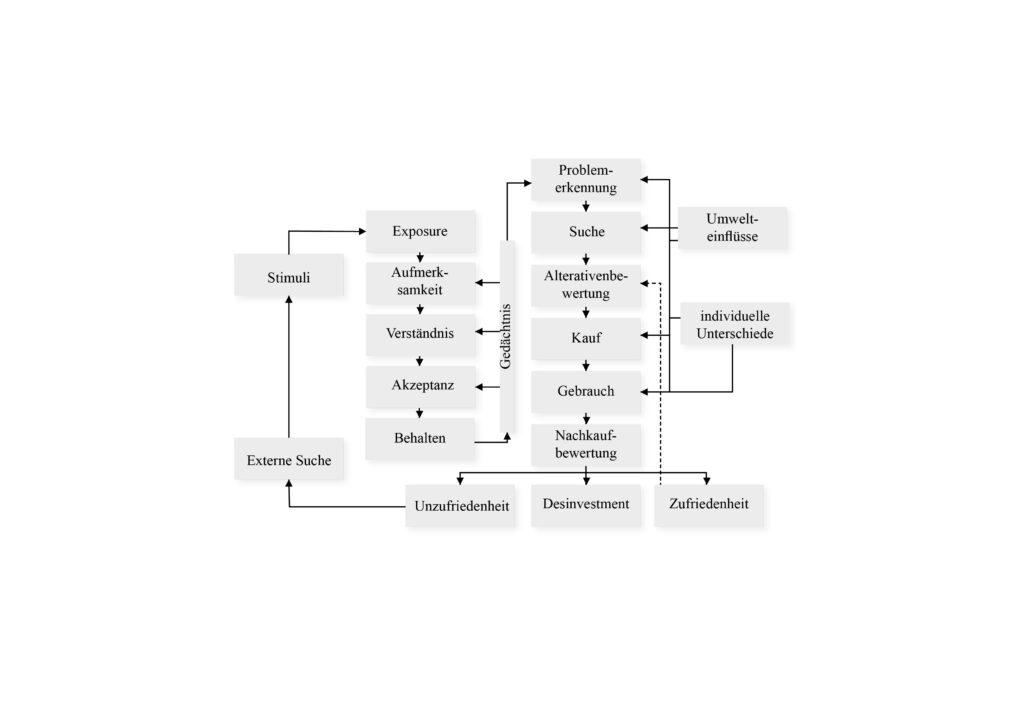Since looking at examples of design activism and the medium of the poster, I have dived deeper into the underlying principles behind Social Visual Communication. When observing the graphic artworks produced by the “Ateliers Populaire” in 1968, I could not help but wonder if the students rioting did indeed achieve their goal? Did they catch the onlooker’s eye and maybe even change the opinion of someone with just their printed flyers and posters?
Those musings lead me to the underlying inquiry of whether you can actually influence someone with a poster at all? If yes, what should a poster (or any graphic design) look like and which features should it have to impact someone’s behaviour?
To begin unravelling this aforementioned mystery, I firstly looked back on previous research I conducted. For my bachelor thesis I observed social influencers and their influence on the attitude behaviour gap in the sustainability behaviour of generations Y and Z. While researching this topic, I came across several models and determinants of behaviour, which were albeit focused on consumer behaviour alone. For instance, Blackwell et al. developed a total model to map the entire purchase decision process which can be viewed below (Hoffmann & Akbar, 2019):

During the further course of my work, I dived deeper into sustainable behaviour and eco-conscious consumption, explored what barriers hinder people from such and finally researched if influencers on social media could make a positive impact on this. When observing this, I imagine Communication Design could maybe impact the exposure, attention, and comprehension stages of behaviour, but since my work only focussed on the impact of influencers and not design, it is impossible to tell just yet.
Fortunately, after some more reading, I happened upon a book called “Cause and effect – Visualizing sustainability” (2012), which contains examples design approaches that try to raise awareness and stimulate sustainable behaviour.
In the book, the authors describe the unique importance of the communication industry for conveying the necessary knowledge for sustainable practices (Bohle, 2012, p.2-3). They define the concept of sustainability communication:
“What distinguishes successful sustainability communication is that it sensitizes people, puts its finger on problems, and creates a sense of awareness. It arouses enthusiasm, offers guidance, and motivates people to take action. It addresses specific target groups with the aim of reaching the most various stakeholders. It communicates topics of sustainability, conducts PR and communication for environmental and social activities, disseminates information on the environmental impact and social compatibility of products and services, designs sales promotions and events conveying aspects of sustainability, supports and advances strategic consumption, and activates people for the aims of sustainable development. Successful sustainability communication gives attention to the real-life situations of people so that sustainability does not remain an abstract and empty word, but gains relevance”.
(Bohle, 2012, p.2-3)
When it comes to concrete ways with which design could aid the cause of changing people’s behaviour in a positive way, the authors mainly focus on the way topics should be communicated and which topics should be highlighted: “Each and every day, people deal with more than 10,000 units of information. The consequence is an information overload of around 99 percent, meaning that only 1 percent of the information we take in winds up in our short-term or long-term memory. To “slip into” this 1 percent is one of the three barriers that sustainability communication must overcome. […] First it must invite us to take a look by making use of unusual picture combinations. It must develop a pictorial and formal vocabulary that is extraordinary and sets itself off from everyday monotony” (Bohle, 2012, p.6). In addition to this, they also describe that sustainability communication must touch the onlookers emotionally in order to overcome the hurdle of people not feeling personally affected by climate change and must “translate the highly complex and in part complicated interrelations of sustainability into a comprehensible language” (Bohle, 2012, p.6).
The factors mentioned here are very interesting, but I am still wondering of how the visual aspect could aide or hamper inspiring onlookers to change their behaviour to safe our planet. In addition, I am also curious about in how far the learnings from this book could also be transferred to other causes like Social Movement campaigns etc. However, this question shall be the topic of further exploration…
References:
- Bohle, S. (2012). Cause and effect – Visualizing sustainability. gestalten.
- Hoffmann, S., Akbar, P. (2019). Konsumentenverhalten – Konsumenten verstehen – Marketingmaßnahmen gestalten. Springer Gabler.